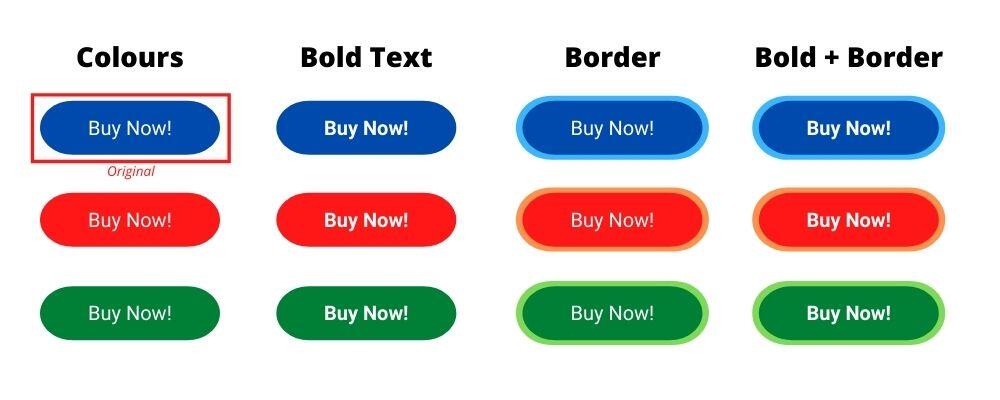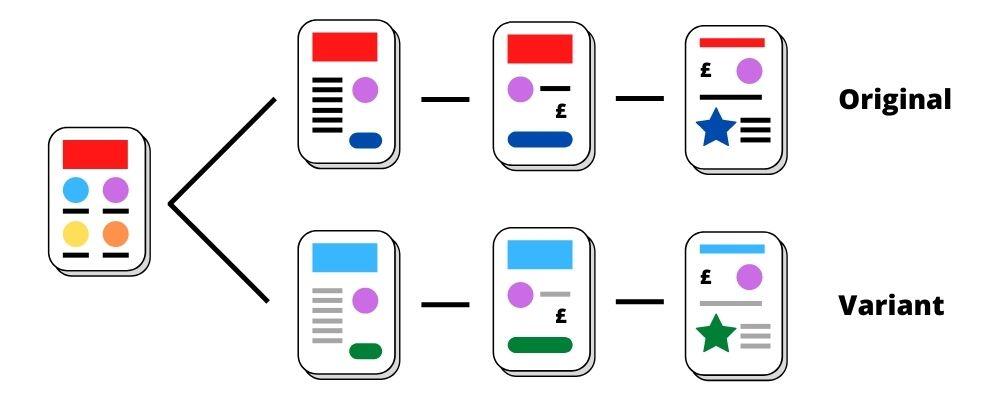In the world of digital marketing there are a variety of A/B testing techniques you can use to improve your website’s performance. From testing a single change on a page to building new pages from scratch, we’ll look at some of the most common types of A/B tests you can run on your website today.
What is an A/B test?
Sometimes you may want to test changes to your website without committing to those alterations. Making changes without first testing them risks reducing website performance if they don’t work quite as well as expected. A/B testing is a process that allows you to compare the impact of website changes. By comparing how well each variant performs, you can make informed decisions about what changes to implement. This has a number of benefits and can save you a considerable amount of time and money.
What types of A/B tests are there?
Most people may refer to A/B testing as perhaps changing a single element on a page, such as an image or text, or perhaps comparing two different web pages against each other. These are both true, though there are other types of A/B tests out there that we’ll look at today. Each type of A/B test has its own benefits and depending on what changes you would like to make, different A/B tests will work better than others, so plan ahead!
Variant A/B Tests
One of the most widely used and well known types of A/B test is the variant A/B test. Also referred to as “split testing” this test involves creating a single or set of changes to a web page which is then called a “variant”. This variant version of the web page is then shown to a percentage of visitors (usually half, 50%) and the original version is shown to the remaining half.
Check out our video on how to perform a simple variant A/B test using Google Optimize below.
This type of A/B test allows you to test specific changes to an existing web page, without needing to build the page from scratch. Performance can then be measured by using a selection of your own chosen metrics, based on what kind of improvement you want to see. Normally these will be conversions or goals that you have set up already, though most A/B testing tools will come with their own built-in, predefined metrics.

For example if you decide to change the colour of a “Buy Now” button on your website, you may want to measure sales that came via that button, or even just clicks on the button itself, to give you an idea of how much more noticeable it is to your visitors. By performing variant A/B testing, you can test your changes in advance and then implement the better performing result.
Multivariate A/B Tests
Do you want to test lots of different changes at once, without creating an entirely new web page? Multivariate A/B tests are similar to variant A/B tests but are designed to simultaneously test different combinations of changes on a single page.
Multivariate A/B tests can test hundreds of permutations of changes to find you the best performing result.
Expanding the above example, we may want to test a number of different changes, such as different coloured buttons, changing text to bold and adding a border effect. Even adding a small number of changes can quickly add up the number of possible combinations that you would need to test.

Just by adding a few changes, the number of variants you need to test jumps up to 12. That’s a lot of complicated split testing to determine which elements are the most effective. Using a multivariate A/B test instead can use your website visitors to do the heavy lifting and test which combination works best.
Redirect A/B Tests
Sometimes a list of changes to a page just aren’t enough and you would rather test redirecting your visitors to a different page altogether. This could be a brand new page with a new layout or an alternative to your original page to push visitors in a different direction.
Comparatively simple compared to other A/B tests, you’ll often only need to provide a substitute URL of the redirect page(s) and decide how to split your visitors. Normally when comparing two pages, a 50/50 split of visitors is recommended. However if your page is particularly important, perhaps a high traffic page that results in sales, you may want to reduce the risk. Allocating a different split and redirecting 10% of your visitors to a new page will let you run the test, without impacting too many visitors at once.
Multi-Page Funnel A/B Tests
One of the advanced A/B tests available, multi-page funnel A/B tests can be a combination of other A/B test types, used across multiple pages. As the name suggests, this is often part of a funnel such as a sales process. Instead of making changes on an individual page, similar changes can be made on a sequence of pages. This is particularly useful for A/B testing different how a specific change can impact your sales funnel or conversion rate.

This type of A/B test can let you see the broader impact of a site-wide change by giving your visitors a persistent variation of your website to experience. It should be noted however that while changes can be made on multiple pages, the number of changes to be tested should be kept to a minimum. A/B testing too many small individual changes over multiple pages can make the test take significantly longer to get any meaningful results.
Free Digital Tips Direct to your Inbox!
Be among the first to receive tips, advice and news on all things digital performance related. From new features in Google Analytics, Data Studio and other tools, to interesting articles, videos and more! Completely Free! (Unsubscribe any time you like!)
What kind of A/B test should I use?
Depending on what kind of changes you want to make to your website, different kinds of A/B tests will be more suitable than others. While the choice will be different for every website, a general rule of thumb to follow is:
- Looking to make a single or few distinct changes and compare the pages against each other? Use a variant A/B test.
- Looking to make a collection of changes, such as adding new elements to a page, additional text, new images, etc, to find the best result? Use a multivariate A/B test.
- Looking to test how a change can impact a particular funnel, visitor flow or pathing throughout your website? Use a multi-page funnel A/B test.
- Looking to test a brand new page against an existing one? Use a redirect A/B test.
Your experience may vary depending on what you specifically want to test. You may make a number of different changes but only want to test the results of a particular one, in which case a regular variant A/B test would be just fine and give you results in the shortest amount of time.
Remember that no matter what type of A/B test you choose to use on your website, you should measure the results properly. Select the most appropriate conversions and objectives for your A/B test and use that data to make meaningful changes to your website. If you’re looking for ideas for what you can test, we have some ideas for you here, and here, so start your A/B testing today.





